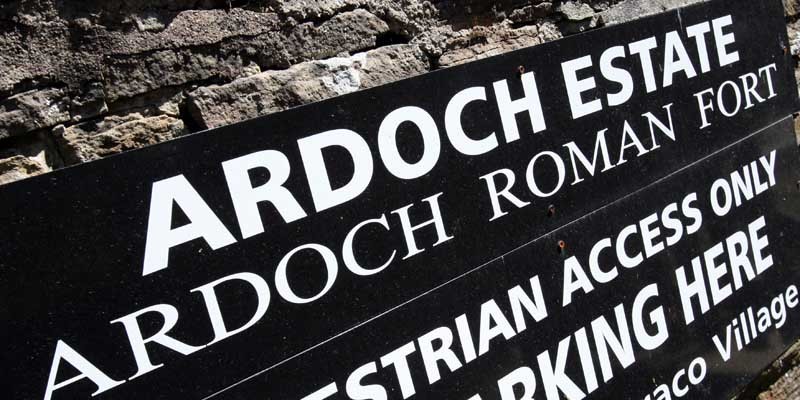The Scottish Government has been told now is the time to set out a strategy to improve Roman history tourism.
While there are centres that celebrate both Pictish and Viking history there is nothing that celebrates the rich, diverse Roman history of Scotland.
The importance of the Romans in Perthshire was highlighted this week as Newburgh historian Tom Paterson claimed the ancient fortress of Carpow, on the Fife/Perthshire border, could once have been used as a residence by an emperor.
Mr Paterson has spent three decades researching the site and believes that it may have even greater historical importance than had previously been suspected. Mr Fraser said he believed the attraction would prove a draw to tourists and history buffs from around the world.
“I believe that if we have a national Roman Centre then we could eventually have thousands of people coming to Scotland to visit our ancient Roman sites,” he said.
“A National Roman Centre in Perthshire would be great for the local economy and youngsters from across Scotland could visit and learn about Scotland’s Roman history.
“I lodged the parliamentary question on Scotland’s Roman culture as it is important at the beginning of the new parliamentary session for the Scottish Government to realise the contribution Roman history can make to Scotland today.”
Mr Fraser’s idea would have the backing of Perth and Kinross Council, whose convener of enterprise and infrastructure said it would further boost the large number of visitor attractions in the region.
Councillor John Kellas said, “The council would support the idea of any major new national museum being situated in Perth and Kinross, adding to the wide array of tourist attractions we can already offer in the area.
“The opening of such a facility would boost visitor numbers to Perth and Kinross and inject money into the local economy.”
Culture minister Fiona Hyslop has described the notion of a national Roman Centre as “an interesting idea.”
As the parliament returns to business, Mid Scotland and Fife Tory MSP Murdo Fraser hopes to see that spark of interest developed. Mr Fraser believes a national Roman Centre would help promote the history of the region, protect its Roman sites and attract visitors.
He has set out the case for the attraction in Perthshire and believes the nation would be “missing a great economic opportunity” if it fails to capitalise on its Roman heritage.
The MSP told The Courier, “Now that the Scottish Government has elevated the role of Culture Minister to Cabinet Secretary, I believe that the Cabinet Secretary for Culture Fiona Hyslop must use her increased clout to ensure that a national Roman centre is created in Scotland.
“Across Europe, other countries have national Roman centres and these act as a focal point for Roman tourism. Perthshire has a number of Roman sites, such as Ardoch fort, which is one of the best preserved Roman sites in the UK, yet people could drive past Ardoch and not know that it is there.
“This underlines the need for the Scottish Government to develop our sites and improve Scotland’s Roman history for our young people to learn about our past and for the tourism industry to develop.”
The Romans ruled Britain from 43 to 410 AD, and the frontier was Hadrian’s Wall during much of that period. However, there were at least three occasions on which Roman armies moved into Scotland in force and occupied what is now Perth and Kinross.
The area is home to the most northerly frontier of the empire, the Gask Ridge, which stretched from the Highland massif through Fife and Perthshire.
A series of timber and turf-built forts and signal stations, it is significant in Romano-Scottish history and also in the time-line of the history of Roman land frontiers across the empire.
Evidence of the Gask Ridge and of the Roman occupation is still to be found throughout the area and some of the sites remain among the finest in Europe.
